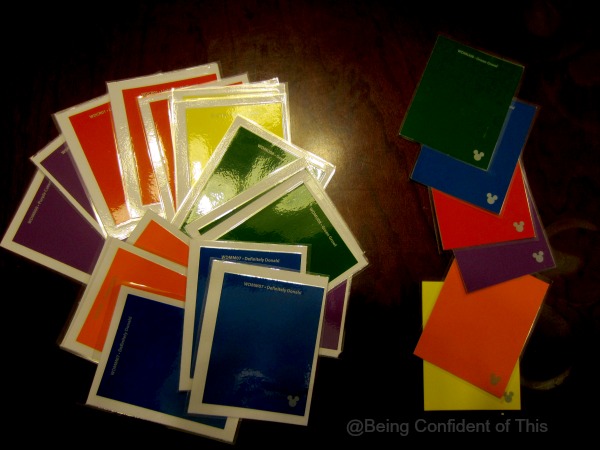We all know scripture memorization is important. If only it were also easy! If memorizing Bible verses proves difficult for adults, then imagine how much more difficult it can be for our young children to learn scripture.
Over my years of mothering our four kiddos and working with children at church, I’ve learned that teachers of preschoolers in particular need to be really creative. Sometimes that’s a real struggle for me because what works for adults doesn’t always work for kids, and even more, what works for one child may not work for another.
So, for all of the purposeful parents, the homeschooling mamas, the Sunday School teachers, the toddler nursery workers, the Children’s Church volunteers, the daycare providers, the AWANA teachers, for anyone who desires to teach kids bible verses but isn’t sure where to begin, here are my favorite methods for teaching scripture to children:
7 Creative Methods for Teaching Scripture to Children
1. Check it – Be sure the verse is short enough.
For very young students even a single sentence might be too long. If the verse you have chosen is lengthy even in a children’s bible version, condense it further. For example, if “Be kind and compassionate to each other” is too much, shorten it to “Be kind to others” or for very young children: “Be kind.”
Equally important, be sure that that your children or students understand the words in the verse. What good is memorizing a verse that holds no meaning for them? 🙂
When teaching scripture to children, be sure to consider the age of your pupils!
2. Act it – create motions to go along with the verse.
In general, preschoolers tend to learn more when they are being active rather than passive. Even many elementary-age children prefer to learn through movement rather than seatwork. So, especially for those little learners who always seem to have ants in their pants, this technique can work wonders.
For example, in our Cubbies class (preschool class for AWANA at church) we recently learned the verse “Children obey your parents in the Lord.” The word “children” was portrayed by holding a hand out flat, palm down, and stair-stepping down, as in “stair-step children” (that’s the best I could think of – anyone have a better idea for children??). Then for the phrase “obey your parents,” we pointed our finger straight out like a mommy telling a child what to do (picture Uncle Sam’s we-want-you pose – the kids really understood that gesture well, haha). Finally, For “in the Lord” we simply pointed straight up into the air as if we were pointing to God in Heaven.
If you happen to know sign language, the easiest gestures would be actual signs, especially for words or phrases that will be repeated often, like God, Jesus, or Bible. Sometimes my Cubbies are able to help me think of appropriate gestures, too. It’s important to include their input when teaching scripture to children.
Youtube example:
*One important note: do not try to attach a gesture to every single word in the verse. Doing so will frustrate some children and will interrupt the natural flow of the verse. You only need a gesture for each concept or phrase in the verse. A second note: if the children look confused, then your chosen hand gesture or motion is not computing. Let it go and try something else. 🙂
3. Play with it!
We usually repeat our memory verse a few times together before we get a little silly with it. When the boys’ eyes begin to glaze over, I know we’ve repeated one too many times. 🙂
Once we can mostly say it together, I usually ask the children to stand up and push in their chairs so we can be more active. We might crouch down and say the verse very, very quietly (gestures included) and then hop up and say it as loud as we can. Sometimes we march around our table and say it, or we chant it to a rhythm, or we sing it, or clap it out, or use silly voices, and so on. Songs in particular work very well at this age.
Creativity is key when teaching scripture to children!
Sometimes we march around our table and say it, or we chant it to a rhythm, or we sing it, or clap it out, or use silly voices, and so on. Songs in particular work very well at this age (Tip: you can use familiar tunes such as Farmer in the Dell, Old MacDonald, Three Blind Mice, etc. to put the words to if you don’t already know a song for the verse you are trying to teach).
Youtube example:
Once we used the suggested game for that week from our Cubbies book – let’s call it, “Lights on, lights off.” When the lights were off, the kids were free to move around in whatever manner they desired: walking, creeping, running, hopping, crawling, etc. When the lights came on, everyone had to freeze in place. Once they understood the concept of the game, I used the “freeze” time to repeat our verse. The same concept could be used with music rather than lights.

4. Repeat it – give each child to a chance to say it alone.
Once we have played around with the memory verse a little bit, most children will have at least part of the verse, if not the whole, in their minds. At this point, I usually test my Cubbies a little while still trying to keep it fun.
For instance, if we’re chanting our verse to a beat, then in between each repetition, I’ll give a single student a chance to say it on his or her own. Then the whole class says it together, followed by another individual, and so on. Be sure to support those who need it so they don’t become embarrassed.
And we always, always celebrate, even if we are only partially successful at saying the verse!
5. Draw it!
Some students prefer putting crayon to paper over reciting verses aloud. Since my preschool Cubbies cannot read yet, I might ask them to draw a picture of their verse.
Of course, at their age I always have a few who choose to draw something totally unrelated, but for those who process information visually or spatially, drawing can really help to cement the concept of the verse in their minds.
The Bible verse cards below can be colored – how cool is that?!
*This post contains affiliate links.* Jen is a participant in the Amazon Services LLC Associates Program, an affiliate advertising program designed to provide a means for sites to earn advertising fees by advertising and linking to amazon.com.
6. Forget about references…for now.
Not that we shouldn’t attempt to teach the reference at all – I still do. However, I just don’t stress about it anymore when teaching scripture to kids.
At this age remembering a reference that doesn’t hold much meaning (for them) and is difficult to even pronounce can be really challenging and frustrating, especially for kids who might not be familiar with the books of the Bible. How many three-year-olds can actually pronounce books like Deuteronomy, Ecclesiastes, or Thessalonians? Even if they can pronounce them, do they understand what those words followed by numbers mean?
If not, then they are learning words that make no sense to them, hold no meaning.
Thus, in my humble opinion, the priority should be the conceptual learning taking place: truths about God making us, God loving us, loving others, etc. I still teach the references, but I don’t emphasize them as much as the body of the verse itself. As long as a child remembers the main idea of the verse, I count it a win!
However, if you are going to be working on a verse for an extended time, then by all means, include the reference! Additionally, if your children or students are older and can understand the purpose of a reference, then the reference should most definitely be included! 🙂
7. Remember variety, different methods work with different children, so use a variety when possible.
Our preschool daughter loves to say her verses carefully along with hand gestures as if she is performing on stage.
On the other hand, her twin brother resists the hand gestures, but he love, love, LOVES anything repeated in a weird or sing-song voice. (True story – I once entertained him through an entire grocery shopping trip simply by repeating the same phrase over and over again in a robot voice. Whatever works, right?!
You can use a cd like this to play in the car on repeat to get the Word of God stuck in their minds (and yours, too)! 🙂
Of course, sometimes during AWANA, or even at home, the kids are so crazy and energetic that we fail to accomplish much in the way of teaching scripture to children. And we don’t always make time for memory verses either, but when we do, I want to make sure that it’s time well-spent.
Whether you are teaching scripture to children at church or in your own home, I hope you find these tips helpful! I have yet to find any ways to address tactile (touch-based/sensory) learners who cannot read yet, so if any of you have ideas for me, I’d really love to hear them.
Blessings to you brave mamas and teachers of little ones,
Jen 🙂
Sharing this post with: Hive Resources, Wholehearted Home
You may also find me linking up at any of these lovely places.










